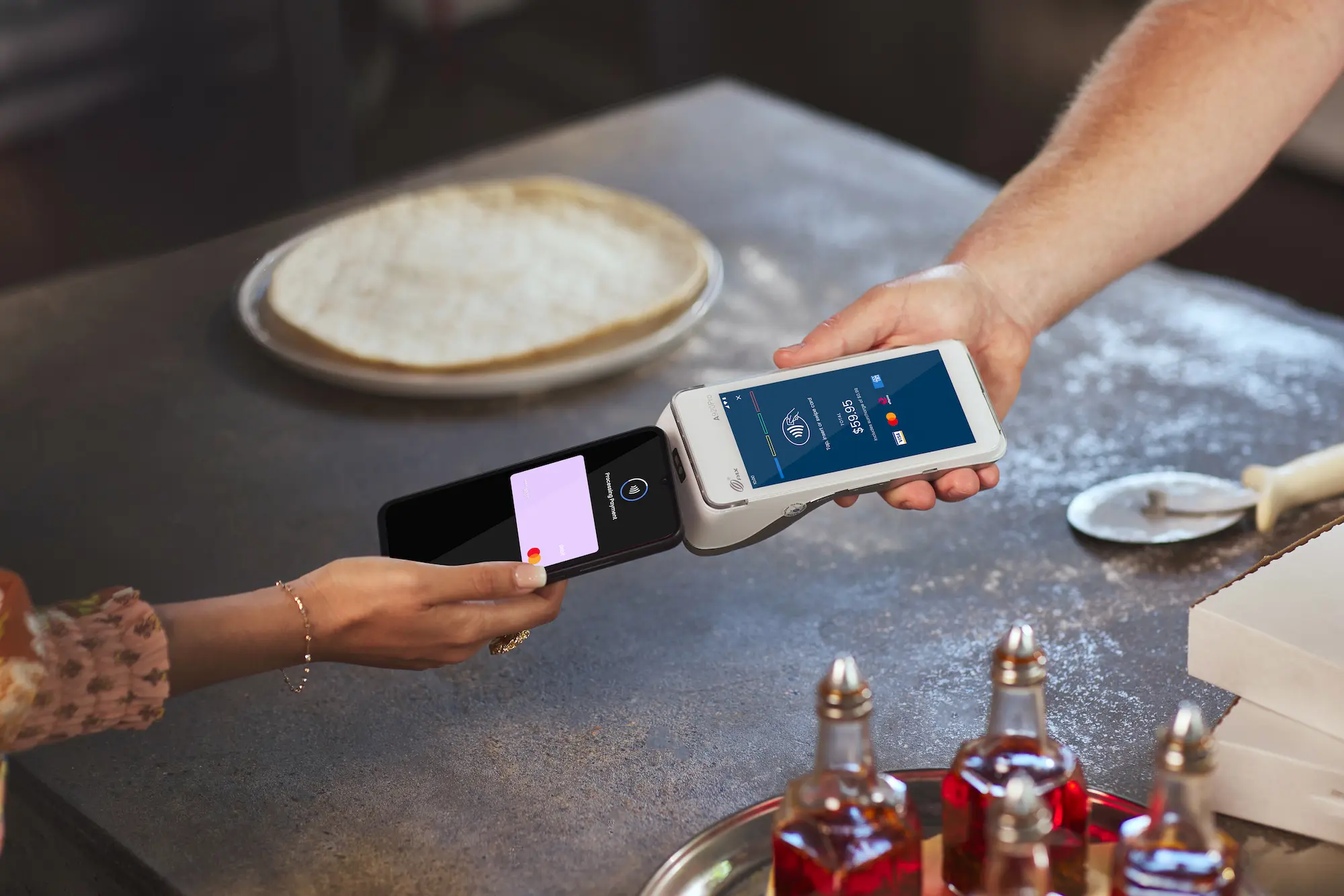

Let’s explore how you, as a business owner can accept credit card payments. No jargon, no vague explanations, just clear, easy to understand and accurate advice. So, let’s get into it!
24% of retail purchases are made with credit cards1 (the other 76% being debit cards) . This means, not accepting credit cards means you could be missing out on nearly 1 in 4 customers!
It’s important that your business accepts credit cards, as it’s a common way consumers pay. The good news is that accepting credit cards is a standard feature for most EFTPOS payment providers. So fear not!
First, you’ll want to decide how you’ll want to accept payments.
Taking payments in-person? You’ll need an EFTPOS machine (also referred to as ‘EFTPOS terminals’, ‘card readers’, etc., all meaning the same thing!). Learn more about the meaning of EFTPOS here.
There’s a few key things you should consider when choosing an EFTPOS provider.
Make sure to consider if your business has any must-haves. For example, do you need:
Ensure that your EFTPOS provider includes any of your must-have features.
Your main costs when it comes to EFTPOS are going to be:
As well as the above there can be a number of other fees, including:
These fees can be confusing and can really add up. That’s why we came up with Smartpay Zero Cost™ EFTPOS. With Smartpay Zero Cost™ EFTPOS you pay nothing in merchant fees and terminal rental! As well, there’s no hidden fees or charges. If your business processes $10,000 or more in card transactions per month you could be eligible for Smartpay Zero Cost™ EFTPOS.
Customer support – the thing you hope you never need, until you do!
Whether it be connecting to POS, printing receipts, ordering additional terminals, etc. it’s likely you’ll need to contact support at some point. It’s important you get the right support, when you need it. Choose an EFTPOS provider that provides 24/7 local support.
Not to toot our own horn, but Smartpay has 24/7 AU/NZ based support with lightning quick response times. Need help with your terminal at 3AM? We’re a phone call away!
Generally speaking, linking your EFTPOS machine to your point-of-sale (POS) means that you can take payments quicker than manual entry. POS integration can also mean easier stock-keeping and inventory management. If you think your business could benefit from POS integration then try to select an EFTPOS provider that integrates with your POS system. Smartpay integrates with a number of POS systems.
Most payment providers also give you the option of processing credit card transactions over the phone (also called MOTO payments). You just manually add your customer’s credit card details into your EFTPOS terminal. You’ll need their credit card number, expiry date and CVC or CVV. This feature may need to be set up by your EFTPOS provider once you sign up, so make sure to ask about this during the setup process. Learn about what MOTO is here.
Most website builders such as WooCommerce have online payments integrated into their platforms. There are a number of other online payment solutions for more unique payment types such as invoicing or recurring subscriptions.
There are companies that offer both online and in-person payments.. However, most payment providers specialise in either online or in-person payments so it’s worthwhile at least exploring these solutions separately.
When you accept credit cards in your business, whether online or in person, there will always be fees and costs. Our hot tip? Always check out what kind of fees you’ll have to pay before signing up. Here are some common fees you can expect.
Overall, accepting credit card payments is a good move for your business as it’s a common way customers pay. There however are some risks to know, mentioned below.
Chargebacks can result in the original sale and a chargeback fee being deducted from your account. Fear not though as you can provide evidence to dispute the chargeback.
If you’re interested in learning more about chargebacks read the Smartpay Merchant Chargeback and Fraud Prevention Guide.
1 Bank 2024, Retail Payments May 2024, Reserve Bank of Australia, viewed 25 October 2024, <https://www.rba.gov.au/statistics/frequency/retail-payments/2024/retail-payments-0524.html>.
Calculated from ‘Number of Retail Payments’ table. Calculated as, number of credit and charge cards divided by total card purchases on Australian-issued cards.
Smartpay is multi-award winning* and used by over 35,000+ (and growing) businesses in Australia and New Zealand. We’re here with great technology that’s easy to set-up, simple to use and 24/7 AU/NZ support for your business journey. Still not convinced? We’re proud to say we have the highest Google Review star rating out of all major EFTPOS providers. Get started with Smartpay here.
*2024 WeMoney winner ‘Best for Value Merchant Terminal’ & ‘Best for Flexibility Merchant Terminal’.
There’s more than meets the eye when a card payment is made. It has to be checked that the customer has enough money in their account to make the payment. Then, the payment has to be transferred from the customer into a merchant account, into your bank account. It’s this process and the infrastructure required that means payments aren’t completely free.
However, with Smartpay Zero Cost™ EFTPOS you’re able to pass a small surcharge onto customers. This surcharge can cover the full cost of your merchant fees and terminal rental*.
*Minimum turnover and terms & conditions apply.
You can use only your EFTPOS terminal to accept payments (without needing POS). How? Simply enter the purchase amount into your Smartpay EFTPOS terminal, press ‘purchase’, and that’s it! Simple as!
Some payment providers offer payment acceptance via phone. Customers can have lower trust in payment via phone, phones don’t allow insert or swipe payments and there are reports of difficulty for some phones in accepting payments from certain phones and card types. However, while there are a number of downsides to accepting payments with your phone if you are transacting with very low volume this could be a good solution.


Find out in less than a minute